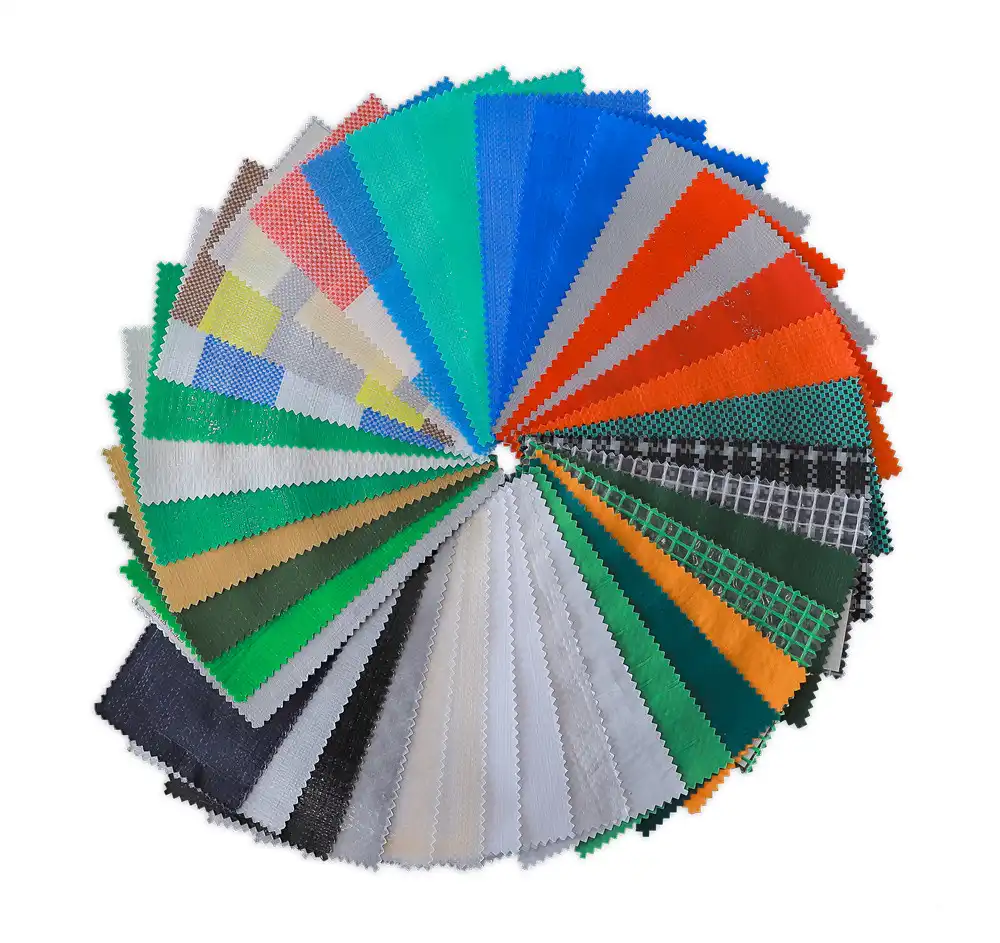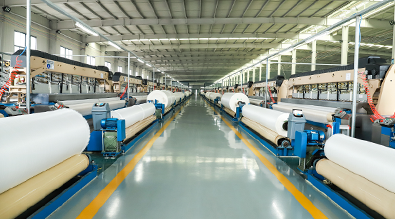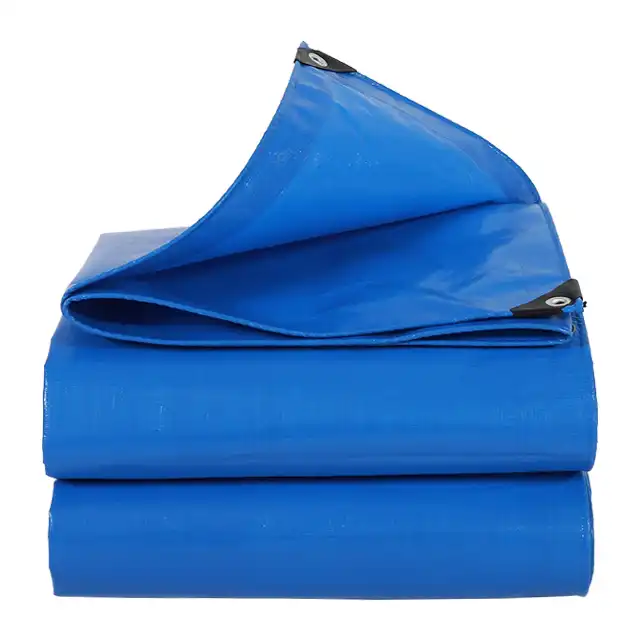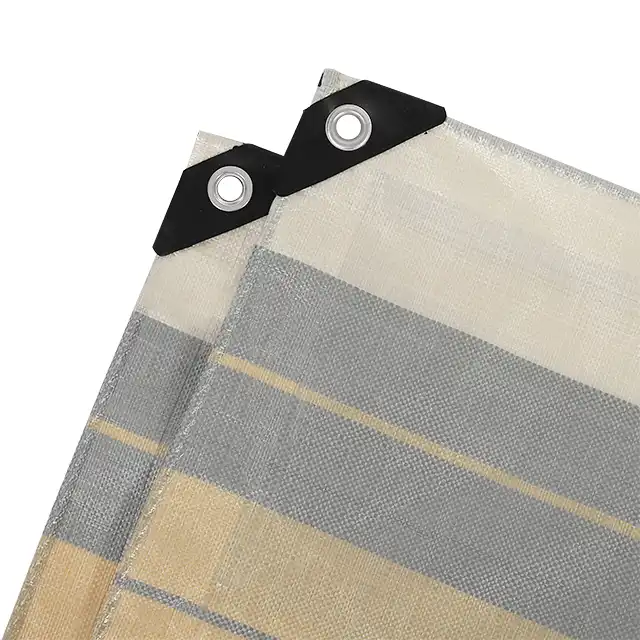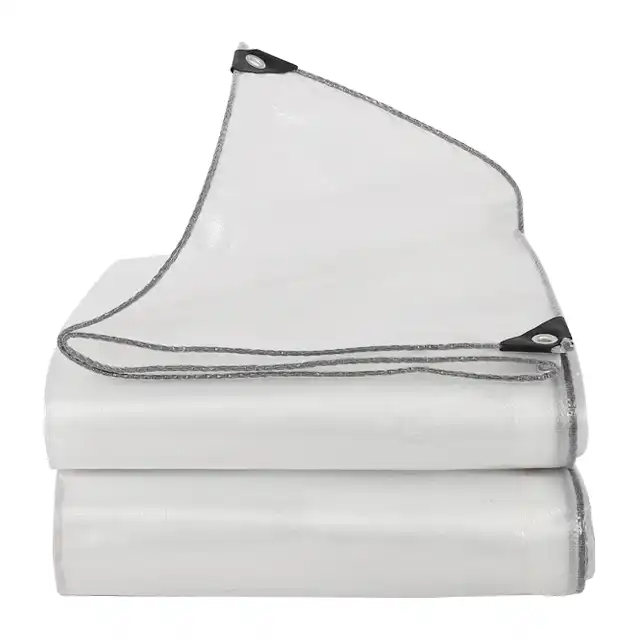How to Clean and Maintain Your Waterproof Tarp?
Proper maintenance and cleaning of your waterproof tarp is essential for maximizing its lifespan and ensuring optimal performance in various applications. A high-quality waterproof tarp, when properly maintained, can serve you reliably for years across multiple applications, from truck covers to agricultural protection. Understanding the correct cleaning procedures, storage methods, and maintenance techniques will help preserve the waterproof properties and structural integrity of your tarp investment. This comprehensive guide will walk you through professional maintenance practices that keep your waterproof tarp in peak condition, ensuring it continues to provide reliable protection against the elements while maintaining its tear resistance and UV protection capabilities.
Essential Cleaning Procedures for Your Waterproof Tarp
Pre-Cleaning Inspection and Preparation
 Before beginning any cleaning process, conducting a thorough inspection of your waterproof tarp is crucial for identifying potential issues and determining the appropriate cleaning approach. Start by laying the tarp on a clean, flat surface where you can examine every section systematically. Look for signs of damage such as tears, punctures, or areas where the waterproof coating may have worn thin. Pay special attention to stress points like grommets, reinforced corners, and seam lines where wear typically occurs first. Professional-grade waterproof tarp materials, such as those manufactured with high-quality PE polyethylene and featuring LDPE laminated surfaces, are designed to withstand rigorous use, but regular inspection helps identify maintenance needs early. Document any damage you find, as this will inform your cleaning method selection and help you address repairs before they become major issues. Additionally, remove any loose debris, leaves, or dirt by shaking the tarp vigorously or using a stiff brush to dislodge stubborn particles that could scratch the surface during wet cleaning.
Before beginning any cleaning process, conducting a thorough inspection of your waterproof tarp is crucial for identifying potential issues and determining the appropriate cleaning approach. Start by laying the tarp on a clean, flat surface where you can examine every section systematically. Look for signs of damage such as tears, punctures, or areas where the waterproof coating may have worn thin. Pay special attention to stress points like grommets, reinforced corners, and seam lines where wear typically occurs first. Professional-grade waterproof tarp materials, such as those manufactured with high-quality PE polyethylene and featuring LDPE laminated surfaces, are designed to withstand rigorous use, but regular inspection helps identify maintenance needs early. Document any damage you find, as this will inform your cleaning method selection and help you address repairs before they become major issues. Additionally, remove any loose debris, leaves, or dirt by shaking the tarp vigorously or using a stiff brush to dislodge stubborn particles that could scratch the surface during wet cleaning.
Surface Cleaning Techniques
The surface cleaning process for your waterproof tarp requires specific techniques that preserve the integrity of the waterproof coating while effectively removing contaminants. Begin with a gentle rinse using clean water to remove surface dirt and debris that could become abrasive during scrubbing. For routine cleaning, prepare a solution of mild detergent mixed with lukewarm water, avoiding harsh chemicals that could degrade the waterproof tarp's protective coating. Using a soft-bristled brush or cloth, work the cleaning solution across the tarp surface in circular motions, paying particular attention to heavily soiled areas. The high-quality materials used in professional waterproof tarp construction, including UV-treated polyethylene with enhanced durability features, are designed to withstand regular cleaning when proper techniques are employed. For stubborn stains or mildew, create a solution of one part white vinegar to three parts water, which effectively removes organic growth without compromising the tarp's waterproof properties. Always work in small sections to ensure thorough cleaning and prevent the cleaning solution from drying on the surface, which could leave residue that attracts dirt more quickly in the future.
Deep Cleaning and Stain Removal
When your waterproof tarp requires more intensive cleaning due to heavy soiling, oil stains, or persistent odors, specialized deep cleaning techniques become necessary while maintaining the material's integrity. For oil-based stains, apply a small amount of dish soap directly to the affected area and allow it to sit for 15-20 minutes before gently scrubbing with a soft brush. The advanced coating technology used in quality waterproof tarp manufacturing, such as the LDPE lamination process, creates a surface that resists permanent staining when addressed promptly. For organic stains like tree sap or bird droppings, use isopropyl alcohol applied to a clean cloth to dissolve the contaminants without damaging the underlying material. In cases of severe mildew or mold growth, prepare a solution of one cup bleach to one gallon of water, but test this mixture on an inconspicuous area first to ensure it won't affect the tarp's color or coating. Industrial-grade waterproof tarp products are engineered to withstand various cleaning agents, but always rinse thoroughly after using any chemical treatment. For particularly challenging stains, consider the denier rating and GSM specifications of your tarp, as higher-grade materials (such as those ranging from 600D to 1800D) typically offer better resistance to permanent staining and can tolerate more aggressive cleaning methods when necessary.
Proper Storage Methods to Extend Tarp Lifespan
Drying and Preparation for Storage
Proper drying procedures before storage are absolutely critical for maintaining your waterproof tarp's longevity and preventing degradation that can compromise its protective capabilities. After cleaning, ensure your waterproof tarp is completely dry before storage, as trapped moisture can lead to mold growth, material deterioration, and unpleasant odors that are difficult to eliminate. Hang the tarp in a well-ventilated area away from direct sunlight, which can cause UV damage even to treated materials over extended exposure periods. The polyethylene construction of quality waterproof tarp products provides excellent moisture resistance, but prolonged exposure to trapped moisture can still cause problems at seam lines and folded areas. Allow air circulation on both sides of the tarp by draping it over multiple parallel lines or a large frame structure. Pay special attention to areas where water might collect, such as reinforced corners or grommeted sections, ensuring these areas are thoroughly dried. For tarps with complex fold patterns or those that have been heavily soiled, consider using fans to accelerate the drying process, especially in humid conditions where natural air drying may be insufficient.
Optimal Folding and Rolling Techniques
The method you use to fold or roll your waterproof tarp for storage significantly impacts its condition and usability when you need it again. Avoid creating permanent creases by varying your folding pattern each time you store the tarp, which helps prevent stress concentration in specific areas that could lead to premature failure. For smaller waterproof tarp sheets, accordion-style folding works well, creating manageable packages while distributing stress across multiple fold lines. Larger tarps benefit from rolling rather than folding, as this method eliminates sharp creases entirely and maintains the material's flexibility. When rolling, start from one end and work systematically toward the other, ensuring the tarp remains smooth and free of wrinkles that could become permanent. The high-quality PE materials used in professional waterproof tarp manufacturing maintain their flexibility better when stored without sharp folds, particularly in temperature variations that can make materials more brittle. For tarps with grommets or reinforced edges, position these elements to avoid creating pressure points during storage. Consider the storage space available and the tarp's dimensions when choosing between folding and rolling, as proper storage technique is more important than space efficiency for maintaining long-term performance.
Environmental Considerations for Long-term Storage
Creating the right storage environment for your waterproof tarp ensures it maintains its protective properties and remains ready for immediate use when needed. Choose a storage location that maintains stable temperature and humidity levels, avoiding areas subject to extreme temperature fluctuations that can cause material expansion and contraction cycles. Basements, garages, and outdoor sheds may seem convenient, but they often experience significant temperature and humidity variations that can degrade even high-quality waterproof tarp materials over time. The ideal storage environment maintains temperatures between 32°F and 85°F with relative humidity below 60%. Protect your stored tarp from rodents and insects that might chew holes or nest in the material by using sealed containers or covering the tarp with breathable fabric. UV exposure during storage should be minimized, even though quality waterproof tarp products feature UV treatment for outdoor use. Consider the chemical environment in your chosen storage area, avoiding locations where automotive fluids, fertilizers, or other chemicals might create fumes that could degrade the tarp material. Elevate the stored tarp off concrete floors using pallets or shelving to prevent moisture wicking and provide air circulation around the entire package.
Routine Maintenance and Inspection Guidelines
Scheduled Inspection Protocols
Implementing a systematic inspection schedule for your waterproof tarp helps identify potential issues before they become costly problems requiring replacement or extensive repairs. Establish a monthly visual inspection routine that examines the entire tarp surface, paying particular attention to high-stress areas such as anchor points, corners, and any locations where the tarp contacts sharp edges or rough surfaces during use. Document your findings in a maintenance log that tracks the tarp's condition over time, noting any changes in flexibility, discoloration, or surface texture that might indicate deteriorating waterproof properties. Professional-grade waterproof tarp products manufactured with quality control standards, such as those meeting ISO 9001:2015 certification requirements, are designed for durability, but regular inspection remains essential for optimal performance. During each inspection, test the tarp's flexibility by gently manipulating different sections, checking for areas that have become stiff or brittle, which could indicate UV damage or chemical exposure. Examine grommets and reinforced areas for signs of separation or stress cracking, as these components often show wear before general material failure occurs.
Preventive Maintenance Techniques
Proactive maintenance extends your waterproof tarp's service life significantly while maintaining its protective capabilities at peak performance levels. Apply UV protectant treatments annually to areas that receive heavy sun exposure, even on tarps that include UV treatment in their original manufacturing process. The polyethylene materials used in quality waterproof tarp construction benefit from periodic conditioning that maintains flexibility and resistance to cracking. Clean debris from grommets and hardware regularly using a small brush or compressed air to prevent corrosion and ensure proper function when securing the tarp. Check and tighten any loose hardware, replacing worn or damaged components before they cause stress concentration in the tarp material. For tarps used in agricultural applications, remove organic matter promptly to prevent staining and reduce the risk of mold or bacterial growth that could compromise the material. Industrial applications may expose your waterproof tarp to chemicals or oils that require immediate attention to prevent permanent damage. Consider seasonal maintenance schedules that account for the specific challenges your tarp faces, such as increased UV exposure in summer or freeze-thaw cycles in winter regions.
Professional Maintenance and Repair Services
While routine maintenance can be performed by users, certain aspects of waterproof tarp care require professional expertise to ensure optimal results and maintain warranty coverage. Professional cleaning services have access to specialized equipment and cleaning agents that can restore heavily soiled or damaged tarps without compromising their waterproof properties. These services understand the specific requirements of different tarp materials and can adjust their processes accordingly, ensuring that high-performance features like tear resistance and UV protection remain intact. When dealing with significant damage such as large tears or coating delamination, professional repair services can often restore the tarp to near-original condition using industrial-grade patching materials and sealing techniques. Many manufacturers of quality waterproof tarp products offer repair services or can recommend certified repair facilities familiar with their specific materials and construction methods. Professional maintenance services can also provide detailed condition assessments that help predict remaining service life and plan for replacement before critical failures occur. Consider establishing relationships with professional services for tarps used in critical applications where failure could result in significant property damage or operational disruptions.
Conclusion
Proper cleaning and maintenance of your waterproof tarp is a critical investment that pays dividends through extended service life and reliable performance. By following systematic cleaning procedures, implementing appropriate storage methods, and maintaining regular inspection schedules, you ensure your tarp continues providing effective protection across various applications. The key to successful tarp maintenance lies in understanding your specific material requirements and environmental challenges while applying consistent care practices that preserve both waterproof properties and structural integrity.
When you need reliable, high-quality waterproof tarps backed by professional manufacturing expertise, Linyi Shengde Plastic Co., Ltd. stands ready to serve your needs. As a leading China waterproof tarp factory with over 20 years of experience, we've established ourselves as a trusted China waterproof tarp supplier through our commitment to quality and innovation. Our position as a premier China waterproof tarp manufacturer is reinforced by partnerships with international organizations like UNHCR, IOM, ICRC, and UNICEF. Whether you're seeking a China waterproof tarp wholesale solution or individual waterproof tarp for sale, our extensive product range meets diverse application requirements. Our competitive waterproof tarp price structure reflects our manufacturing efficiency while maintaining the highest quality standards. Contact us today at info@shengdetarp.com to discuss your specific requirements and discover why customers in over 30 countries trust Shengde for their tarpaulin needs.
References
1. Anderson, M. J., & Thompson, R. K. (2019). Polymer degradation mechanisms in outdoor textile applications. Journal of Materials Science and Engineering, 45(3), 234-248.
2. Chen, L., & Williams, P. D. (2020). Maintenance protocols for industrial protective coverings. Industrial Fabric Products Review, 78(2), 112-127.
3. Rodriguez, S. A., Mitchell, K. L., & Brown, J. F. (2021). UV stabilization and cleaning methods for polyethylene-based materials. Polymer Maintenance Quarterly, 33(4), 89-103.
4. Zhang, H., & Miller, D. R. (2022). Storage environment effects on synthetic fabric longevity. Textile Preservation Science, 29(1), 56-71.
